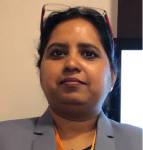Isometric was better than Isotonic Neck Stretching to Reduce Pain and Creatinine Kinease in Non-specific Neck Pain in Caring Students of Swadhyaseni Middle High School, Badung, Bali
DOI:
https://doi.org/10.18311/jeoh/2019/23070Keywords:
Creatine Kinase, Isometric, Isotonic, Nonspecific Neck Pain, Pain ScaleAbstract
Neck pain is frequently complained by workers with static neck position. Complaints accompanied by discomfort around the neck muscles without any sensory disturbances or radiating pain, without specific causes such as history of neck trauma, neck malignancy or anatomical structural abnormalities. The samples were taken from carving students of Swadhyaya Middle School Badung. We evaluated 18 students divided into 2 groups: one with isometric neck stretches and another with isotonic neck stretches, 9 subjects each. The paired t-test found the number of decrease in NPRS in the isometric group was greater than isotonic group and the difference was statistically significant. The results of the unpaired student t-test obtained a mean decrease in NPRS in the isometric group greater than isotonic with a value of P = 0.00 (p <0.01). Creatine kinase levels in the isometric group showed no significant difference, whereas creatine kinase levels in the isotonic group showed that the increase was not significantly different, the results of the independent student t test showed values not significantly different from the isometric and isotonic groups with the intention of p = 0.284 (p> 0.01). These results indicate isometric stretching is more effective in reducing the scale of NPRS pain in non-specific neck pain compared to isotonic stretches, isometric and isotonic stretching techniques are equally less effective in reducing creatine kinase levels.Downloads
Metrics
Downloads
Published
How to Cite
Issue
Section
Accepted 2019-06-11
Published 2019-09-06
References
Ariens GA, van Mechelen W, Bongers PM, Bouter LM, van der Wal G. Psychosocial risk factors for neck pain: A systematic review. American Journal of Industrial Medicine. 2001; 39:180–93. https://doi.org/10.1002/1097-0274(200102)39:2<180:: AID-AJIM1005>3.0.CO;2-#
Giannoula T, Roy R, Win D, Paul VN. Nonspecific neck pain and evidence based practice. European scientific Journals. 2013; 9:6.
Masum SB, Haqe M, Haque M, Islam MS. Prevalence of neck pain and associated factors among office workers. The American Journals of Innovative Research and Applied Sciences. 2014; 1:4.
Nemade VV. Musculoskeletal disorders in brick client workers. Incidence and Effectiveness of Workers Education Programe. 2014; 3:3.
Sihawong R, Janwantanakul P, Sitthipornvorakul E, Pensri P. Exercise therapy for office workers with nonspecific neck pain: a systematic review. Journal of Manipulative and Physiological Therapeutics. 2011; 34:62–71. https://doi.org/10.1016/j.jmpt.2010.11.005. PMid:21237409
Brook P, Bogduk N. Evidence based management of acute musculoskletal pain. The National Health and Medical Research Council, First Edition; 2003. p. 14.
Nejati P, Lotfian S, Moezy A, Nejati M. The study of correlation between forward head posture and neck pain in Iranian office workers. International Journal of Occupational Medicine and Environmental Health. 2015; 28:295–303. https://doi.org/10.13075/ijomeh.1896.00352
Mufti D, Suryani E, Sari N. Evaluation of work posture among Songket fabric craftsmen at Pandai Sikek. Scientific Industrial Technique Journal. 2013; 12:63–71.
Palmer KT, Walker-Bone K, Griffin MJ, Syddall H, Pannett B, Coggon D, Cooper C. Prevalence and occupational associations of neck pain in the British population. Scandinavian Journal of Work, Environment & Health. 2001; 27:49–56. https://doi.org/10.5271/sjweh.586. PMid:11266146
Baird MF, Graham SM, Baker JS, Bickerstaff GF.0 Creatinekinaseand exercise-related muscle damage implications for muscle performance and recovery. Journal of Nutrition and Metabolism. 2012; 2012:13. https://doi.org/10.1155/2012/960363. PMid:22288008. PMCid:PMC3263635.
M.V S. Isometric neck exercises versus dynamic neck exercises in chronic neck pain; 2014.
Gross A, Kay TM, Paquin JP, Blanchette S, Lalonde P, Christe T, et al. Exercises for mechanical neck disorders. Cochrane Database of Systematic Reviews. 2015. https://doi.org/10.1002/14651858.CD004250.pub5
Binder A. The diagnosis and treatment of nonspecific neck pain and whiplash. Europa Medicophysica. 2007; 43:79–89. PMid:17369782
Gupta S, Jaiswal P, Chhabra D. A comparative study between postisometric relaxation and isometric exercises in non-specific neck pain. 2012.
Clarkson PM, Byrnes WC, McCormick KM, Turcotte LP, White JS. Muscle soreness and serum creatine kinase activity following isometric, eccentric, and concentric exercise. International Journal of Sports Medicine. 1986; 7:152–5. https://doi.org/10.1055/s-2008-1025753. PMid:3733311
Agha-Alinejad H, Shamsi M, Azarbayjan M, Rahimi M, Jafarabadi MA, Tofighi L, Mirani M. The effects of active recovery on serum IL-6, IL-8, IL-10 and CK concentrations after eccentric strenuous exercise in active female. Iranian Journal of Endocrinology and Metabolism. 2010; 11(5):553–60.
 Thomas Eko Purwata
Thomas Eko Purwata







